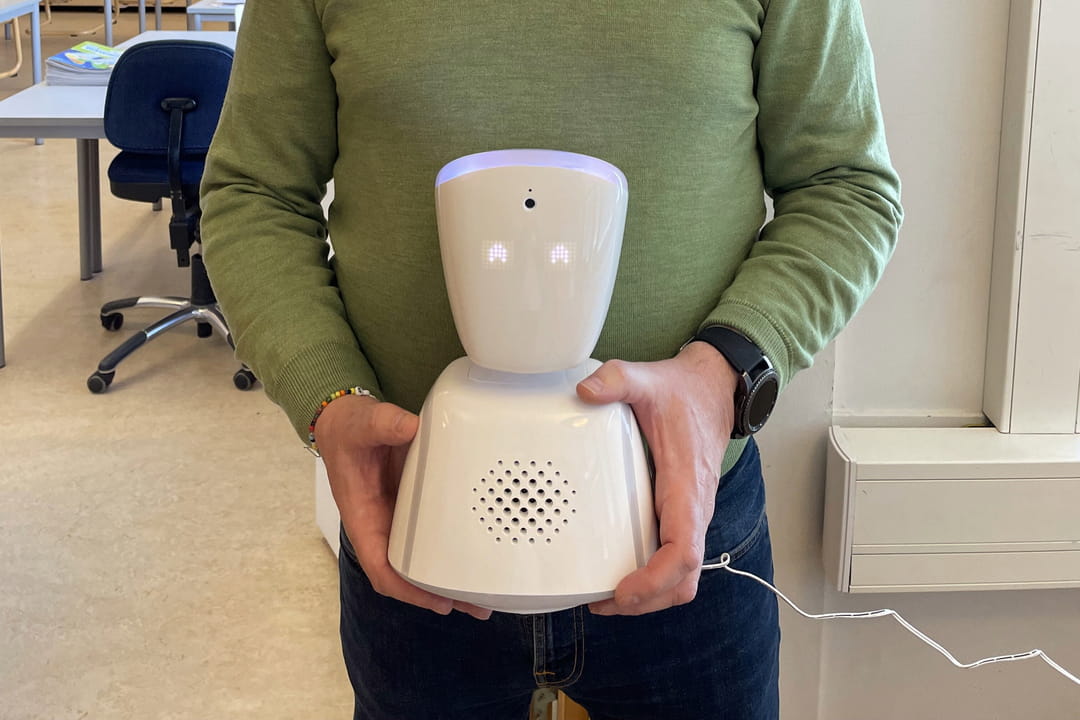This little robot can take the place of a student in class so that he or she can participate in distance learning lessons.
Will robots eventually replace humans? It is one of the great fears of humanity. However, at the moment they are developed more for assistance and recently they have even appeared in schools. The Norwegian company No Isolation has developed a small robot called AV1, which can attend class lessons.
It looks like a simplified version of a human head and torso. It is equipped with a camera, a microphone and a speaker, which serve as eyes and ears to follow the teaching. It can even rotate 360 degrees.
However, this robot does not move by itself, but weighing only one kilogram, it is easy to carry. It is actually placed on a table by the teacher or by a student. Then, the absent student takes control remotely using an application. He can then observe everything that happens in class, hear the lesson and speak to the teacher through the loudspeaker. There is even a “raise your hand” option which manifests itself by flashing a light on the robot’s head and another which allows emojis to appear in the robot’s eyes to show the student’s emotions.

On his sitethe company claims to want to “reduce school absenteeism thanks to AV1 telepresence robots”. This robot is actually reserved for sick children. This is not about those who miss school because of the flu, but about students who suffer from long-term physical or mental health problems, making them unable to go to school for a while. This robot then allows them to follow classes and keep in touch with their classmates.
For Florence Salisbury, marketing director of No Isolation, its primary capacity is to maintain social connections. “During a long absence, where classmates may not see their friend for an extended period of time, that connection to school truly becomes a lifeline for that student, especially for those who are suffering from a health,” she declared to CNN. Michael Douglas, founding director of the company, believes, for his part, that these robots offer children the possibility of continuing to be interested in their lessons even when they are in intensive care.
However, some difficulties may arise when using the robot, particularly in the event of a poor connection. It is also necessary to train teachers on the technical and social aspects of robots. The price is also a barrier. If 3000 units of this robot are already active in 17 countries and in particular in the United Kingdom and Germany, schools must invest 180 euros per month to rent the robot or 4420 euros with an additional service package of 930 euros per year for the robot. ‘buy.
